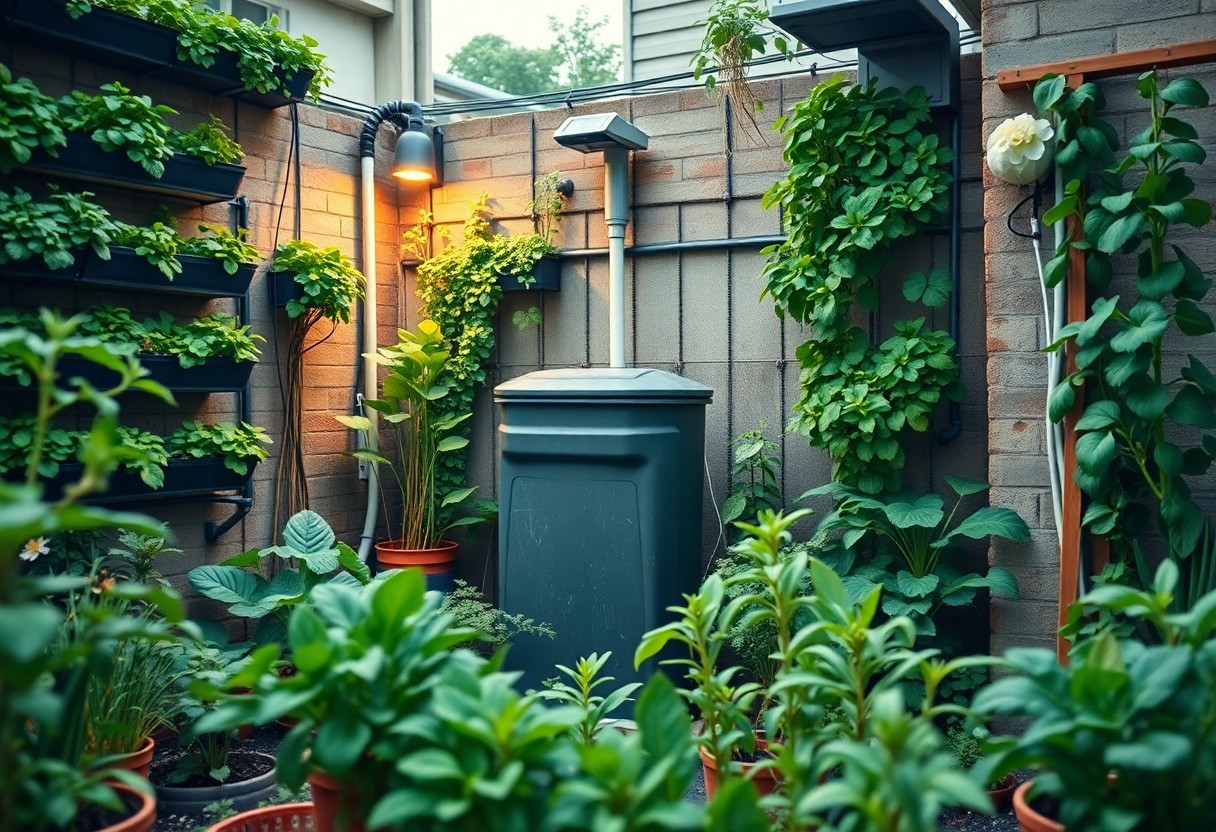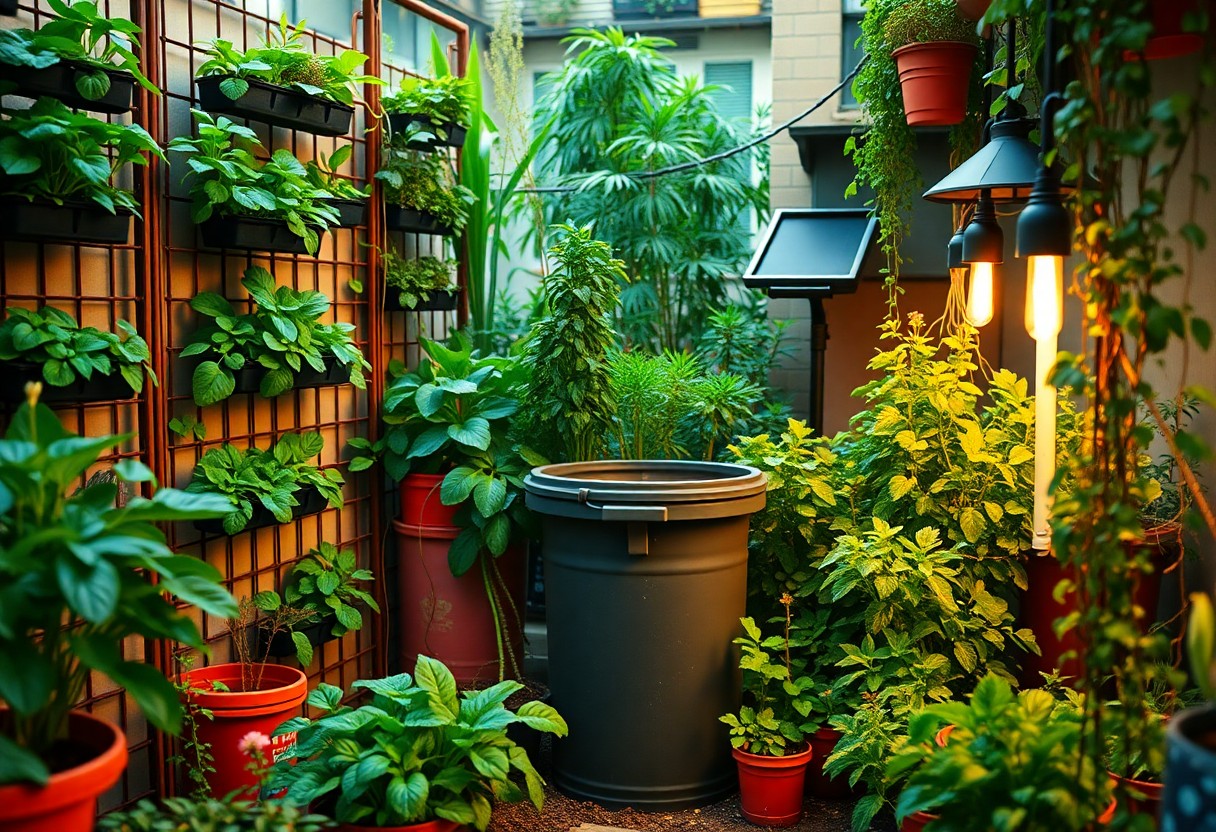As you strive to create a more eco-friendly outdoor space, you’re likely looking for ways to take your sustainable gardening skills to the next level. You can enhance your garden’s health and minimize its environmental impact by adopting innovative techniques. For a comprehensive guide, check out 10 Sustainable Gardening Techniques to Boost Your Garden’s Eco-Friendliness, and discover new methods to make your gardening practices more sustainable and effective.

Soil Conservation
For a sustainable garden, you’ll want to check out Seven Steps to Sustainable Gardening tips to enhance your skills. You can learn how to preserve your soil and create a thriving ecosystem.
Mulching Techniques
Beneath the surface, mulching helps retain moisture and suppress weeds, making it an effective method for soil conservation. You can use organic materials like leaves or straw to create a nutrient-rich mulch.
Composting Strategies
With a little planning, you can turn kitchen scraps into a valuable resource for your garden. You’ll be amazed at how composting can transform your soil and support healthy plant growth.
For instance, you can start by setting up a compost bin and adding food waste, yard trimmings, and other organic materials. As you continue to add to your compost pile, you’ll notice it start to break down into a rich, earthy soil amendment that will take your garden to the next level. You can use this compost to fertilize your plants, improve soil structure, and support the overall health of your garden ecosystem.
1. Utilize composting to enrich soil health naturally.
2. Implement rainwater harvesting for sustainable irrigation practices.
3. Adopt permaculture principles for efficient land use.
4. Explore companion planting to enhance biodiversity and growth.
5. Integrate vertical gardening to maximize limited space.
6. Use native plants to support local ecosystems effectively.

Water Management
You can significantly enhance your sustainable gardening skills by adopting efficient water management techniques, which help conserve this precious resource and reduce your environmental footprint.
Rainwater Harvesting
Among the various methods to collect and store water, installing a rainwater harvesting system is an excellent way to gather and utilize rainwater for your garden, reducing your reliance on municipal water supplies.
Drip Irrigation Systems
Behind every successful sustainable garden is an effective irrigation system, and drip irrigation is one such technique that delivers water directly to the roots of your plants, minimizing evaporation and runoff.
To get the most out of your drip irrigation system, you’ll want to ensure it’s properly installed and maintained, with tubes and emitters placed strategically to provide your plants with the right amount of moisture, and by doing so, you’ll be able to grow healthy and thriving plants while saving water.
Biodiversity Promotion
Once again, you can make a significant impact on your garden’s ecosystem by promoting biodiversity, which is crucial for a healthy and resilient garden. By incorporating a variety of plants, you can create a thriving environment that supports local wildlife.
Native Plant Species
Almost naturally, native plant species will attract local wildlife and support the local ecosystem, making your garden a haven for biodiversity. You can choose plants that are native to your area to create a unique and thriving garden.
Pollinator Support
Across your garden, you can provide a welcoming space for pollinators by planting a variety of flowers that provide nectar and pollen. You can also consider creating a bee hotel to support solitary bees.
Understanding how to support pollinators in your garden is key to promoting biodiversity. You can learn about the different types of pollinators that visit your garden and plant accordingly, providing a constant source of food and shelter for these important visitors, and in turn, they will help your garden thrive.
Pest Control Methods
To maintain a healthy and sustainable garden, you need to manage pests effectively. You can use various techniques to control pests without harming the environment.
Organic Pesticides
On the other hand, you can opt for organic pesticides that are safer for your garden and the environment. You can use neem oil, soap solution, or garlic spray to keep pests away.
Companion Planting
Before planting, you should consider companion planting, which involves planting different species together to deter pests. You can plant marigolds with tomatoes or basil with lettuce to keep pests away.
Pest control can be easier when you use companion planting, as certain plants can repel pests that can harm your crops. You can plant certain herbs, flowers, or vegetables to keep pests away, making your garden healthier and more sustainable. You can experiment with different combinations to find what works best for your garden.

Garden Design
Not only does a well-designed garden make your outdoor space more enjoyable, but it also helps you make the most of your sustainable gardening efforts. You can create a beautiful and functional garden by considering factors like sunlight, soil, and water usage.
Permaculture Principles
Alongside traditional gardening methods, adopting permaculture principles can enhance your garden’s sustainability. You can design your garden to work with nature, creating a thriving ecosystem that supports biodiversity and minimizes waste.
Vertical Gardening
For those with limited space, vertical gardening is a great solution. You can grow a variety of plants on walls, trellises, or other supports, making the most of your available space and adding a decorative element to your garden.
Consequently, as you explore vertical gardening, you’ll find that it offers numerous benefits, including increased yields, improved air quality, and reduced soil erosion. You can use a variety of materials, such as wooden pallets or repurposed containers, to create your own vertical garden, tailored to your needs and style.
Community Engagement
Keep your gardening skills sharp by connecting with like-minded individuals, and check out the Growing Green: Ultimate Guide to Sustainable Gardening for inspiration. You can join local gardening groups to learn from others and share your knowledge.
Cooperative Gardening
Beside the benefits of individual gardening, you can participate in cooperative gardening, where you work together with your community to maintain a shared garden, sharing resources and expertise.
Educational Workshops
Behind the success of your gardening journey, lies the knowledge you gain from educational workshops, where you can learn about sustainable gardening practices and get hands-on experience from experienced gardeners.
Also, attending educational workshops will give you the opportunity to network with other gardeners, learn about new techniques, and get updates on the latest gardening trends, helping you to enhance your sustainable gardening skills and make your garden thrive.
Summing up
Upon reflecting on your sustainable gardening journey, you’ll find that incorporating innovative techniques can significantly enhance your skills. You can apply methods like composting, rainwater harvesting, and crop rotation to minimize waste and maximize yields. By embracing these approaches, you’ll not only reduce your environmental footprint but also enjoy a more bountiful and thriving garden, making your gardening experience even more rewarding and enjoyable for you.



